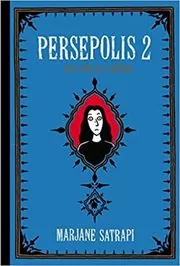Sula Summary
Author: Toni Morrison
This page offers our Sula summary (Toni Morrison's book). It opens with an overview of the book, and follows with a concise chapter-by-chapter summary.
Drafted with AI assistance and reviewed by a human editor.
As an Amazon Associate, we earn from qualifying purchases (at no extra cost to you).
This book has 2 recommenders!
Overview
The Bottom, largely an African-American neighborhood located in the hills above the predominantly white, affluent zone of Medallion, Ohio, was deceitfully given to an ex-slave by his master, who convinced him that the hilly land was a blessing due to its proximity to heaven. Over time, the region became a thriving community, despite the deceit. Now, wealthy white individuals have their eyes on the land, threatening to demolish the community for a golf course. The war veteran, Shadrack, residing there, struggles to adjust post-war and invents 'National Suicide Day' as a way to cope with his fear of death, which the town eventually accepts.
The book contrasts the lives of two friends, Nel and Sula, who come from different backgrounds. Nel is raised in a strict, conventional household by her mother Helene, but questions the rigid lifestyle after meeting her unconventional grandmother Rochelle, a former prostitute. Sula's family, on the other hand, is seen as odd and promiscuous by the town due to the behaviors of her mother, Hannah, and grandmother Eva. Their house also serves as a residence for three boys and various boarders. Despite their differences, the girls form a strong bond during their teenage years. However, their friendship is tested when a tragic accident occurs, leading to the drowning of a local boy during a game initiated by Sula. They never disclose their involvement in the accident and start to drift apart when Sula's mother succumbs to fatal burns from a dress fire.
Following high school, Nel conforms to societal expectations, marrying, and becoming a mother. Sula, on the contrary, leads a life of fierce independence and open disregard for societal norms, leaving the Bottom for ten years and having several affairs, including ones with white men. Upon her return, she is stigmatized as evil, especially after having an affair with Nel's husband, Jude, who subsequently leaves Nel. Ironically, her presence unifies the community. A strained reconciliation occurs between Nel and Sula before the latter's death in 1940. The harmony in the Bottom dissolves with her death. By 1965, the threat of a golf course looms. Nel, visiting Eva in a nursing home, is accused of being complicit in the drowning of the local boy. This accusation prompts Nel to reevaluate her judgment of Sula and admit that she had too hastily adhered to societal norms to claim moral superiority. The narrative explores the themes of morality, relationships, race, and gender, resisting easy solutions and emphasizing the ambiguity and complexity of life.
Edited by
Software engineer whose passion for tracking book recommendations from podcasts inspired the creation of MRB.
Lead investor at 3one4 Capital whose startup expertise and love for books helped shaped MRB and its growth.







Comments
Did we miss something? Have feedback?
Help us improve this page by sharing your thoughts